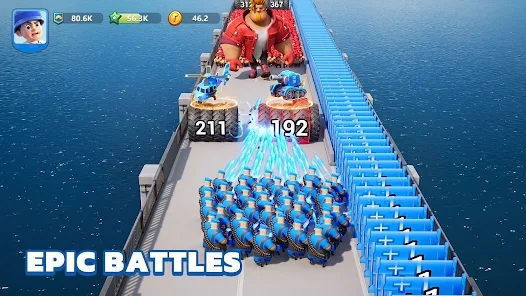Unlocking Learning Through Fun: How Idle Games Transform Educational Game Experiences
In recent years, the landscape of educational games has been significantly transformed by the rise of idle games. These unique gaming experiences not only entertain but also foster learning in an engaging environment. The fusion of play and education is a powerful tool, especially for younger audiences in Ukraine, where creative and interactive learning methods can make all the difference in educational outcomes. This article explores how idle games are reshaping the educational gaming sphere and why they might be among the best video games for story in today's market.
The Rise of Idle Games in Education
Idle games, often characterized by their simple mechanics and gradual accumulation of resources, have taken the gaming community by storm. But how do these games fit into the educational landscape? The answer lies in their ability to captivate attention and make learning feel less like a chore and more like a game.
How Idle Games Work
At the core of idle games is a straightforward premise: players progress through the game without needing to be actively engaged all the time. This laid-back gaming style allows players to learn at their own pace, making it an excellent choice for educational purposes. The mechanics might include:
- Resource management
- Incremental progress tracking
- Simplified gameplay that encourages casual learning
Benefits of Using Idle Games in Education
There are several remarkable benefits associated with using idle games as educational tools:
- Low Pressure Learning: Students can learn concepts without the pressure of fast-paced games.
- Intriguing Storylines: Many idle games integrate narratives that keep players engaged.
- Intrinsically Motivating: The reward systems inherent in these games can help maintain student interest.
Engaging Learning Experiences Designed for Kids
Game designers leverage the unique aspects of idle games to create captivating educational experiences. Many idle games encourage teamwork, problem-solving, and critical thinking. This method transforms passive learning into an interactive adventure.
Case Study: Successful Idle Educational Games
Numerous @educational software@ platforms have adopted idle mechanics. Some exemplary titles include:
| Game Title | Concept | Learning Outcome |
|---|---|---|
| Adventure Academy | Online school with idle mechanics | Improved reading and math skills |
| Tap Tap Builder | City-building simulation | Basic economics and resource management |
| Idle Miner Tycoon | Mining simulation | Strategic planning and resource allocation |
Transforming Learning with Story
The integration of compelling narratives has been a significant factor in the success of idle games. Players are drawn into the storylines, making the educational components of these games more impactful. Incorporating storytelling in educational games keeps students engaged and motivates them to keep learning.
How to Choose the Best Educational Idle Games
Selecting the right educational idle game is crucial. Consider these factors:
- Age Appropriateness: Ensure the game is suitable for the intended age group.
- Educational Relevance: Look for games that align with curriculum goals.
- User Reviews: Read user feedback to gauge the game's effectiveness and fun factor.
Future of Idle Games in Education
As technology and game design continue to evolve, the future of idle games in education looks promising. With advancements in augmented reality and artificial intelligence, these games can provide even more personalized and engaging learning experiences.
Comparative Analysis: Idle Games vs Other Game Genres
While there are various genres of educational games available, idle games stand out due to their gentle learning curve. Below is a comparative analysis:
| Game Genre | Engagement Level | Learning Style |
|---|---|---|
| Idle Games | Moderate | Casual and progressive |
| Action Games | High | Fast-paced and reflex-based |
| Puzzle Games | Moderate to High | Problem-solving based |
Challenges in Implementing Idle Games
Despite their benefits, the implementation of idle games in educational curriculums is not without challenges:
- Resource Allocation: Schools may lack the resources to implement such games effectively.
- Parental Concerns: Some parents may not approve of screen time, regardless of its educational value.
- Finding the Right Balance: Striking a balance between traditional teaching methods and gaming can be difficult.
Integrating Idle Games with Traditional Learning
To maximize the benefits, educators should consider integrating idle games with traditional learning approaches. This hybrid model can provide a well-rounded educational experience:
- Utilize idle games as supplementary tools.
- Encourage discussions around the game’s story and lessons.
- Monitor progress and integrate game-based learning outcomes into assessments.
Conclusion: The Future of Learning Through Idle Games
Idle games are more than mere entertainment; they're a powerful tool in the educational landscape. They allow students to engage with learning material in a relaxed, enjoyable manner, altering their perception of education itself. With their ability to integrate storytelling, resource management, and strategic thinking, these games are paving the way for a new era of learning.
As the world continues to evolve, so too will the methods we use to educate the younger generations. By embracing idle games, we could very well be unlocking the potential for a brighter, more engaging learning experience.



